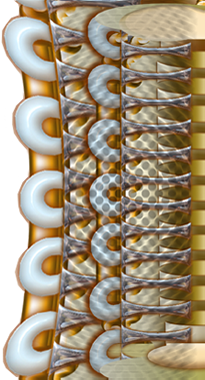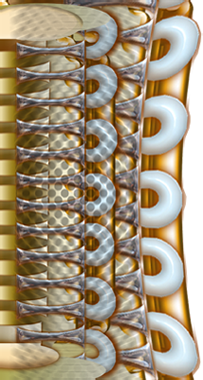| |
song info
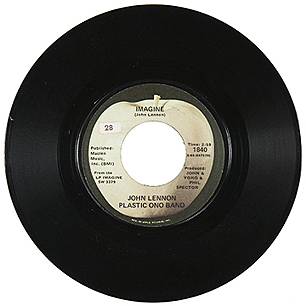
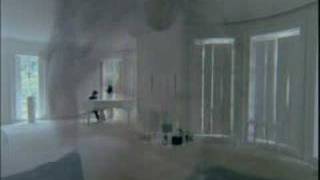 “Imagine” by John Lennon is a classic rock song.
Song Title: Imagine
Artist: John Lennon
Album: Imagine
Genre: classic rock, soft rock, easy listening, rock, pop
Composer: Copyright © 1971 John Lennon
Musical key: C Major
Lead Vocals: John Lennon
Piano: John Lennon, Nicky Hopkins
Bass: Klaus Voorman
Drums: Alan White
Strings: The Flux Fiddlers
Producer: John Lennon, Phil Spector, Yoko Ono
Recorded: May-June 1971 at Ascot Sound Studios, Ascot, and Record Plant East, New York
Released: U.S. October 11, 1971; U.K. October 24, 1975
B-side: “It’s So Hard” (US)
“Working Class Hero” (UK)
Label: Apple
In 1999 BMI named “Imagine” one of the top 100 most-performed songs of the 20th century.
Rolling Stone Top 500: Imagine was selected number three (3) in Rolling Stone Magazine’s 500 Greatest Songs of All Time in May 2011. See Rolling Stone.
Number of listens: 39529

U.S. Billboard Hot 100: 9 weeks, peak #3 (three)
Billboard chart listings courtesy of Billboard Magazine
  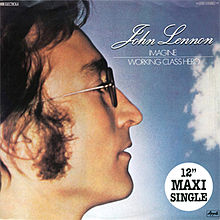
Summary quotation from Wikipedia:
“Imagine” is a song written and performed by the English musician John Lennon. It is the opening track on his album Imagine, released in 1971. The best-selling single of his solo career, its lyrics encourage the listener to imagine a world at peace, without the divisiveness and barriers of borders, religions and nationalities, and to consider the possibility that the focus of humanity should be living a life unattached to material possessions.
Lennon and Yoko Ono co-produced the song and album of the same name with Phil Spector. Recording began at Lennon’s home studio at Tittenhurst Park, England, in May 1971, with final overdubs taking place at the Record Plant, in New York City, during July. One month after the September release of the LP, Lennon released “Imagine” as a single in the United States; the song peaked at number 3 on the Billboard Hot 100 and the LP reached number one on the UK chart in November, later becoming the most commercially successful and critically acclaimed album of Lennon’s solo career. Although not originally released as a single in the United Kingdom, it was released in 1975 to promote a compilation LP and it reached number six in the chart that year. The song has since sold more than 1.6 million copies in the UK; it reached number one following Lennon’s death in December 1980.
BMI named “Imagine” one of the 100 most-performed songs of the 20th century. The song ranked number 30 on the Recording Industry Association of America’s list of the 365 Songs of the Century bearing the most historical significance. It earned a Grammy Hall of Fame Award and an induction into the Rock and Roll Hall of Fame’s 500 Songs that Shaped Rock and Roll. A UK survey conducted by the Guinness World Records British Hit Singles Book named it the second best single of all time, and in 2004, Rolling Stone ranked “Imagine” number 3 in their list of “The 500 Greatest Songs of All Time”. Since 2005, event organisers have played it just before the New Year’s Times Square Ball drops in New York City. Dozens of artists have performed or recorded versions of “Imagine”, including Madonna, Stevie Wonder, Joan Baez, Elton John, and Diana Ross. Emeli Sandé recorded a cover for the BBC to use during the end credits montage at the close of the 2012 Summer Olympics coverage in August 2012. “Imagine” subsequently re-entered the UK Top 40, reaching number 18.
Composition and writing
Several poems from Yoko Ono’s 1964 book Grapefruit inspired Lennon to write the lyrics for “Imagine”—in particular, one which Capitol Records reproduced on the back cover of the original Imagine LP titled “Cloud Piece”, reads: “Imagine the clouds dripping, dig a hole in your garden to put them in.” Lennon later said the composition “should be credited as a Lennon/Ono song. A lot of it—the lyric and the concept—came from Yoko, but in those days I was a bit more selfish, a bit more macho, and I sort of omitted her contribution, but it was right out of Grapefruit.” When asked about the song’s meaning during a December 1980 interview with David Sheff for Playboy magazine, Lennon told Sheff that Dick Gregory had given Ono and him a Christian prayer book, which helped inspire in Lennon what he described as:
The concept of positive prayer … If you can imagine a world at peace, with no denominations of religion—not without religion but without this my God-is-bigger-than-your-God thing—then it can be true … the World Church called me once and asked, “Can we use the lyrics to ‘Imagine’ and just change it to ‘Imagine one religion’?” That showed [me] they didn’t understand it at all. It would defeat the whole purpose of the song, the whole idea.
With the combined influence of “Cloud Piece” and the prayer book given to him by Gregory, Lennon wrote what author John Blaney described as “a humanistic paean for the people.” Blaney wrote, “Lennon contends that global harmony is within our reach, but only if we reject the mechanisms of social control that restrict human potential.” In the opinion of Blaney, with “Imagine”, Lennon attempted to raise people’s awareness of their interaction with the institutions that affect their lives. Rolling Stone’s David Fricke commented: “[Lennon] calls for a unity and equality built upon the complete elimination of modern social order: geopolitical borders, organised religion, [and] economic class.”
Lennon stated: “‘Imagine’, which says: ‘Imagine that there was no more religion, no more country, no more politics,’ is virtually the Communist manifesto, even though I’m not particularly a Communist and I do not belong to any movement.” He told NME: “There is no real Communist state in the world; you must realize that. The Socialism I speak about … [is] not the way some daft Russian might do it, or the Chinese might do it. That might suit them. Us, we should have a nice … British Socialism.”
Ono described the lyrical statement of “Imagine” as “just what John believed: that we are all one country, one world, one people.” Rolling Stone described its lyrics as “22 lines of graceful, plain-spoken faith in the power of a world, united in purpose, to repair and change itself.”
Lennon composed “Imagine” one morning in early 1971, on a Steinway piano, in a bedroom at his Tittenhurst Park estate in Ascot, Berkshire, England. Ono watched as he composed the melody, chord structure and almost all the lyrics, nearly completing the song in one brief writing session. “Imagine” is in the key of C major. Its 4-bar piano introduction begins with a C chord then moves to Cmaj7 before changing to F; the 12-bar verses also follow this chord progression, with their last 4 bars moving from Am/E to Dm and Dm/C, finishing with G, G11 then G7, before resolving back to C. The 8-bar choruses progress from F to G to C, then Cmaj7 and E before ending on E7, a C chord substituted for E7 in the final bar. The 4-bar outro begins with F, then G, before resolving on C. With a duration of 3 minutes and 3 seconds and a time signature of 4/4, the song’s tempo falls around 75 beats per minute.

the first two bars of the piano introduction |

four bars of the main vocal melody from the verse |
Recording and commercial reception
Lennon and Ono co-produced the song and album with Phil Spector, who commented on the track: “We knew what we were going to do … It was going to be John making a political statement, but a very commercial one as well … I always thought that ‘Imagine’ was like the national anthem.” Lennon described his working arrangement with Ono and Spector: “Phil doesn’t arrange or anything like that—[Ono] and Phil will just sit in the other room and shout comments like, ‘Why don’t you try this sound’ or ‘You’re not playing the piano too well’… I’ll get the initial idea and … we’ll just find a sound from [there].”
Recording began at Ascot Sound Studios, Lennon’s newly built home studio at Tittenhurst Park, in May 1971, with final overdubs taking place at the Record Plant, in New York City, during July. Relaxed and patient, the sessions began during the late morning, running to just before dinner in the early evening. Lennon taught the musicians the chord progression and a working arrangement for “Imagine”, rehearsing the song until he deemed the musicians ready to record. In his attempt to recreate Lennon’s desired sound, Spector had some early tapings feature Lennon and Nicky Hopkins playing in different octaves on one piano. He also initially attempted to record the piano part with Lennon playing the white baby grand in the couple’s all-white room. However, after having deemed the room’s acoustics unsuitable, Spector abandoned the idea in favour of the superior environment of Lennon’s home studio. They completed the session in minutes, recording three takes and choosing the second one for release. The finished recording featured Lennon on piano and vocal, Klaus Voormann on bass guitar, Alan White on drums and the Flux Fiddlers on strings.
Issued by Apple Records in the United States in October 1971, “Imagine” became the best-selling single of Lennon’s solo career. It peaked at number 3 on the Billboard Hot 100. It reached number 1 in Canada on the RPM national singles chart, remaining there for two weeks. Upon its release the song’s lyrics upset some religious groups, particularly the line: “Imagine there’s no heaven”. When asked about the song during one of his final interviews, Lennon said he considered it to be as strong a composition as any he had written with the Beatles. He described the song’s meaning and explicated its commercial appeal: “Anti-religious, anti-nationalistic, anti-conventional, anti-capitalistic, but because it is sugarcoated it is accepted … Now I understand what you have to do. Put your political message across with a little honey.” Lennon once told Paul McCartney that “Imagine” was “‘Working Class Hero’ with sugar on it for conservatives like yourself”. On 30 November 1971, the Imagine LP reached number one on the UK chart. It became the most commercially successful and critically acclaimed album of Lennon’s solo career.
Film and re-releases
In 1972, Lennon and Ono released an 81-minute film to accompany the Imagine album which featured footage of the couple in their home, garden and the recording studio of their Berkshire property at Tittenhurst Park as well as in New York City. A full-length documentary rock video, the film’s first scene features a shot of Lennon and Ono walking through a thick fog, arriving at their house as the song “Imagine” begins. Above the front door to their house is a sign that reads: “This Is Not Here”, the title of Ono’s then New York art show. The next scene shows Lennon sitting at a white grand piano in a dimly lit, all-white room. Ono gradually walks around opening curtains that allow in light, making the room brighter with the song’s progression. At the song’s conclusion, Ono sits beside Lennon at the piano, and they share a quaint gaze, then a brief kiss.
Several celebrities appeared in the film, including Andy Warhol, Fred Astaire, Jack Palance, Dick Cavett and George Harrison. Derided by critics as “the most expensive home movie of all time”, it premiered to an American audience in 1972. In 1986, Zbigniew Rybczyński made a music video for the song, and in 1987, it won both the “Silver Lion” award for Best Clip at Cannes and the Festival Award at the Rio International Film Festival.
Released as a single in the United Kingdom in 1975 in conjunction with the album Shaved Fish, “Imagine” peaked at number six on the UK Singles Chart. Following Lennon’s murder in 1980, the single re-entered the UK chart, reaching number one, where it remained for four weeks in January 1981. “Imagine” was re-released as a single in the UK in 1988, peaking at number 45, and again in 1999, reaching number three. Lennon’s best-selling single, as of 2013, it has sold 1,600,000 copies in the UK. In 1999, on National Poetry Day in the United Kingdom, the BBC announced that listeners had voted “Imagine” Britain’s favourite song lyric. In 2003, it reached number 33 as the B-side to a re-release of “Happy Xmas (War Is Over)”.
Recognition and criticism
Rolling Stone described “Imagine” as Lennon’s “greatest musical gift to the world”, praising “the serene melody; the pillowy chord progression; [and] that beckoning, four-note [piano] figure”. Included in several song polls, in 1999, BMI named it one of the top 100 most-performed songs of the 20th century. Also that year, it received the Grammy Hall of Fame Award and an induction into the Rock and Roll Hall of Fame’s 500 Songs that Shaped Rock and Roll. Triple J ranked it number 11 on its Hottest 100 of All Time list. “Imagine” ranked number 23 in the list of best-selling singles of all time in the UK, in 2000. In 2002, a UK survey conducted by the Guinness World Records British Hit Singles Book ranked it the second best single of all time behind Queen’s “Bohemian Rhapsody”. Gold Radio ranked the song number 3 on its “Gold’s greatest 1000 hits” list.
Rolling Stone ranked “Imagine” number 3 on its list of “The 500 Greatest Songs of All Time”, describing it as “an enduring hymn of solace and promise that has carried us through extreme grief, from the shock of Lennon’s own death in 1980 to the unspeakable horror of September 11th. It is now impossible to imagine a world without ‘Imagine’, and we need it more than he ever dreamed.” Despite that sentiment, Clear Channel Communications included the song on its post-9/11 “do not play” list.
On 1 January 2005, the Canadian Broadcasting Corporation named “Imagine” the greatest song in the past 100 years as voted by listeners on the show 50 Tracks. The song ranked number 30 on the Recording Industry Association of America’s list of the 365 Songs of the Century bearing the most historical significance. Virgin Radio conducted a UK favourite song survey in December 2005, and listeners voted “Imagine” number 1. Australians selected it the greatest song of all time on the Nine Network’s 20 to 1 countdown show on 12 September 2006. They voted it eleventh in the youth network Triple J’s Hottest 100 Of All Time on 11 July 2009.
Jimmy Carter said, “in many countries around the world—my wife and I have visited about 125 countries—you hear John Lennon’s song ‘Imagine’ used almost equally with national anthems.” On 9 October 2010, which would have been Lennon’s 70th birthday, the Liverpool Signing Choir performed “Imagine” along with other Lennon songs at the unveiling of the John Lennon Peace Monument in Chavasse Park, Liverpool England. Beatles producer George Martin praised Lennon’s solo work, singling out the composition: “My favourite song of all was ‘Imagine’”. Music critic Paul Du Noyer described “Imagine” as Lennon’s “most revered” post-Beatles song. Urish and Bielen called it “the most subversive pop song recorded to achieve classic status.” Fricke commented: “‘Imagine’ is a subtly contentious song, Lennon’s greatest combined achievement as a balladeer and agitator.”
Authors Ben Urish and Ken Bielen criticised the song’s instrumental music as overly sentimental and melodramatic, comparing it to the music of the pre-rock era and describing the vocal melody as understated. According to Blaney, Lennon’s lyrics describe hypothetical possibilities that offer no practical solutions; lyrics that are at times nebulous and contradictory, asking the listener to abandon political systems while encouraging one similar to communism. Author Chris Ingham indicated the hypocrisy in Lennon, the millionaire rock star living in a mansion, encouraging listeners to imagine living their lives without possessions. Others argue that Lennon intended the song’s lyrics to inspire listeners to imagine if the world could live without possessions, not as an explicit call to give them up. Blaney commented: “Lennon knew he had nothing concrete to offer, so instead he offers a dream, a concept to be built upon.”
Blaney considered the song to be “riddled with contradictions. Its hymn-like setting sits uncomfortably alongside its author’s plea for us to envision a world without religion.” Urish and Bielen described Lennon’s “dream world” without a heaven or hell as a call to “make the best world we can here and now, since this is all this is or will be.” In their opinion, “because we are asked merely to imagine—to play a ‘what if’ game, Lennon can escape the harshest criticisms”. Former Beatle Ringo Starr defended the song’s lyrics during a 1981 interview with Barbara Walters, stating: “[Lennon] said ‘imagine’, that’s all. Just imagine it.”
—from Wikipedia (the Wikipedia:Text of Creative Commons Attribution-ShareAlike 3.0 Unported License applies to Wikipedia’s block of text and possible accompanying picture, along with any alterations, transformations, and/or building upon Wikipedia’s original text that ThisSideofSanity.com applied to this block of text)
|
|



